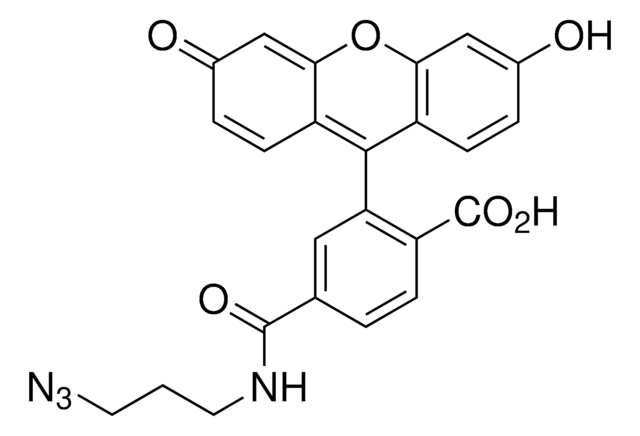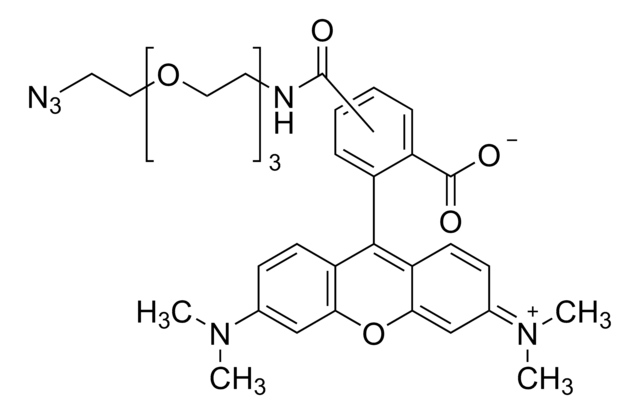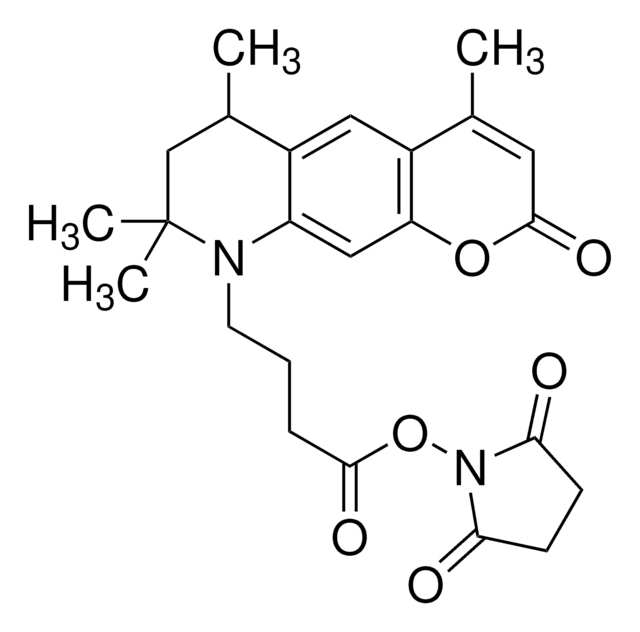Wichtige Dokumente
68321
Atto 390-Azid
BioReagent, suitable for fluorescence, ≥90% (HPLC)
About This Item
Empfohlene Produkte
Produktlinie
BioReagent
Qualitätsniveau
Assay
≥90% (HPLC)
Form
solid
Hersteller/Markenname
ATTO-TEC GmbH
λ
in ethanol (with 0.1% trifluoroacetic acid)
UV-Absorption
λ: 380-384 nm Amax
Eignung
suitable for fluorescence
Lagertemp.
−20°C
SMILES String
CC(CC(C)(C)N1CCCC(NCCOCCOCCOCCN=[N+]=[N-])=O)C2=C1C=C(OC(C=C3C)=O)C3=C2
InChI
1S/C28H41N5O6/c1-20-16-27(35)39-25-18-24-22(17-23(20)25)21(2)19-28(3,4)33(24)9-5-6-26(34)30-7-10-36-12-14-38-15-13-37-11-8-31-32-29/h16-18,21H,5-15,19H2,1-4H3,(H,30,34)
InChIKey
FEBSRHTZZIMYNR-UHFFFAOYSA-N
Allgemeine Beschreibung
The azide modification is suitable for reactions with alkyne groups (Huisgen reaction - “Click Chemistry“).
find more information here
Rechtliche Hinweise
Sie haben nicht das passende Produkt gefunden?
Probieren Sie unser Produkt-Auswahlhilfe. aus.
Lagerklassenschlüssel
11 - Combustible Solids
WGK
WGK 3
Flammpunkt (°F)
Not applicable
Flammpunkt (°C)
Not applicable
Hier finden Sie alle aktuellen Versionen:
Besitzen Sie dieses Produkt bereits?
In der Dokumentenbibliothek finden Sie die Dokumentation zu den Produkten, die Sie kürzlich erworben haben.
Unser Team von Wissenschaftlern verfügt über Erfahrung in allen Forschungsbereichen einschließlich Life Science, Materialwissenschaften, chemischer Synthese, Chromatographie, Analytik und vielen mehr..
Setzen Sie sich mit dem technischen Dienst in Verbindung.






